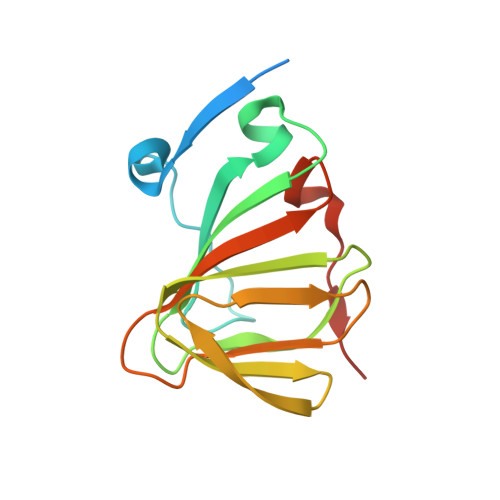Structural and Biochemical Insights into Dimethylsulfoniopropionate Cleavage by Cofactor-Bound DddK from the Prolific Marine Bacterium Pelagibacter.
Schnicker, N.J., De Silva, S.M., Todd, J.D., Dey, M.(2017) Biochemistry 56: 2873-2885
- PubMed: 28511016
- DOI: https://doi.org/10.1021/acs.biochem.7b00099
- Primary Citation of Related Structures:
5TFZ, 5TG0 - PubMed Abstract:
Enormous amounts of the organic osmolyte dimethylsulfoniopropionate (DMSP) are produced in marine environments where bacterial DMSP lyases cleave it, yielding acrylate and the climate-active gas dimethyl sulfide (DMS). SAR11 bacteria are the most abundant clade of heterotrophic bacteria in the oceans and play a key role in DMSP catabolism. An important environmental factor affecting DMS generation via DMSP lyases is the availability of metal ions because they are essential cofactors for many of these enzymes. Here we examine the structure and activity of DddK in the presence of various metal ions. We have established that DddK containing a double-stranded β-helical motif utilizes various divalent metal ions as cofactors for catalytic activity. However, nickel, an abundant metal ion in marine environments, adopts a distorted octahedral coordination environment and conferred the highest DMSP lyase activity. Crystal structures of cofactor-bound DddK reveal key metal ion binding and catalytic residues and provide the first rationalization for varying activities with different metal ions. The structures of DddK along with site-directed mutagenesis and ultraviolet-visible studies are consistent with Tyr 64 acting as a base to initiate the β-elimination reaction of DMSP. Our biochemical and structural studies provide a detailed understanding of DMS generation by one of the ocean's most prolific bacteria.
- Department of Chemistry, The University of Iowa , Iowa City, Iowa 52242, United States.
Organizational Affiliation:



















